On this page will be pictures of sculptures I made in Spring and Summer 2012. I only made one bronze sculpture in the Spring semester, a (4,5) torus knot 10" in diameter, 3.25" thick, with a hollow core, so it weighs approximately 17 pounds. As a companion to the bronze (3,5) torus knot and the iron (4,5) torus knot I made before, this also required the preparation of a core of mold material (sand and resin), carved into the (4,5) torus knot. That core was covered by a layer of plastiline clay to make a layer on top of the core. The result was placed in a two-part sand and resin mold. After that set, the two parts were separated, and the clay covered core had to be dug out and the clay removed. Then the sand core alone was placed inside the two-part mold, held away from it by six small pillars of core material made as spacers by punching out small disks of the clay before the two-part outer molds were made. Access holes, gating grooves and air vents were drilled in the outer mold, and it was all glued together, banded with three steel bands, and cups for pouring in were added to the outside. This was all done in four days. This bronze pour was held on April 16, 2012, with other BU students participating.
I will post more pictures as I continue to work on the piece. These first two pictures show the 10" hollow bronze torus knot just after the gating has been cut off, with polishing and welding still needed. The next two pictures show it after some initial polishing. The last two pictures show it after almost all welding repairs have been made, and initial polishing up to 120 grit, mounted over a bluestone base with a curved mirror under the piece. The final pictures show it after some further welding repairs and polishing as of July 17, 2012.
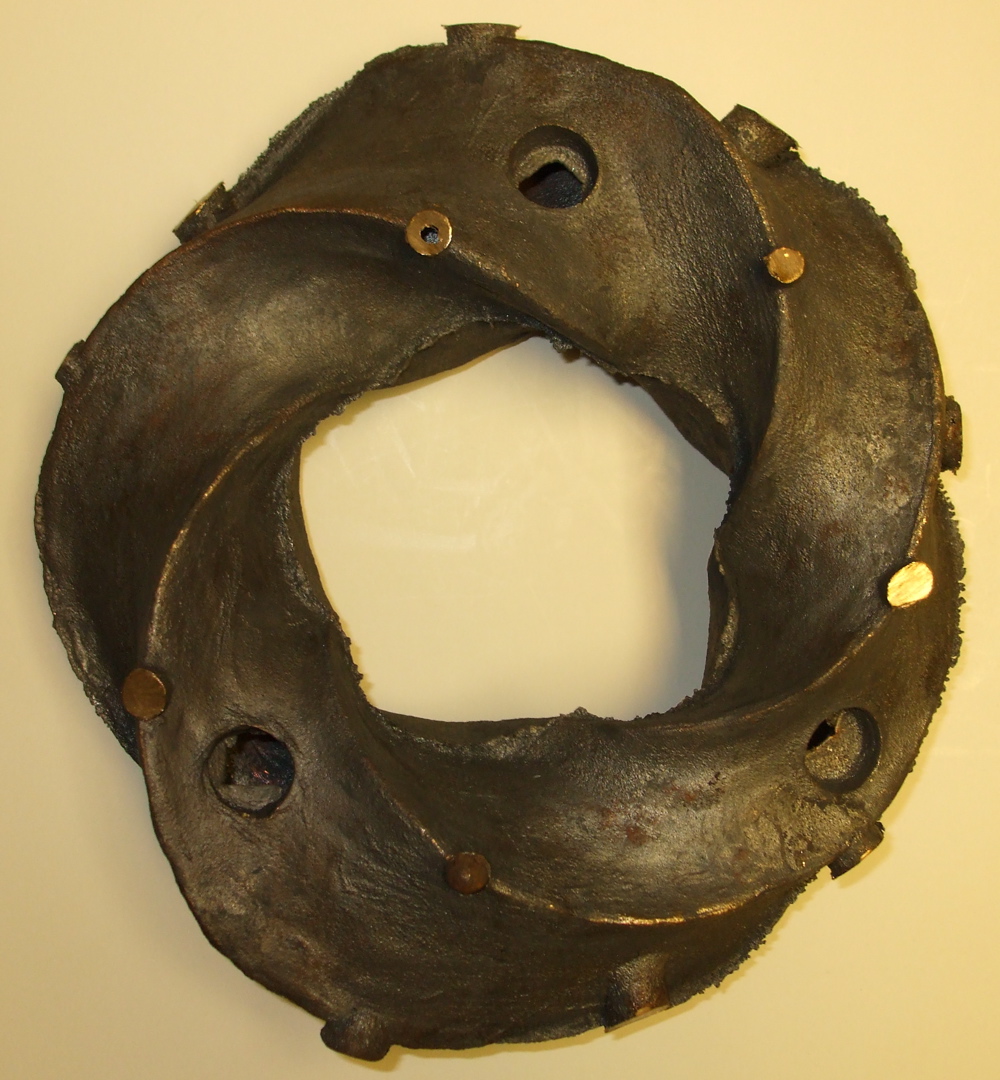
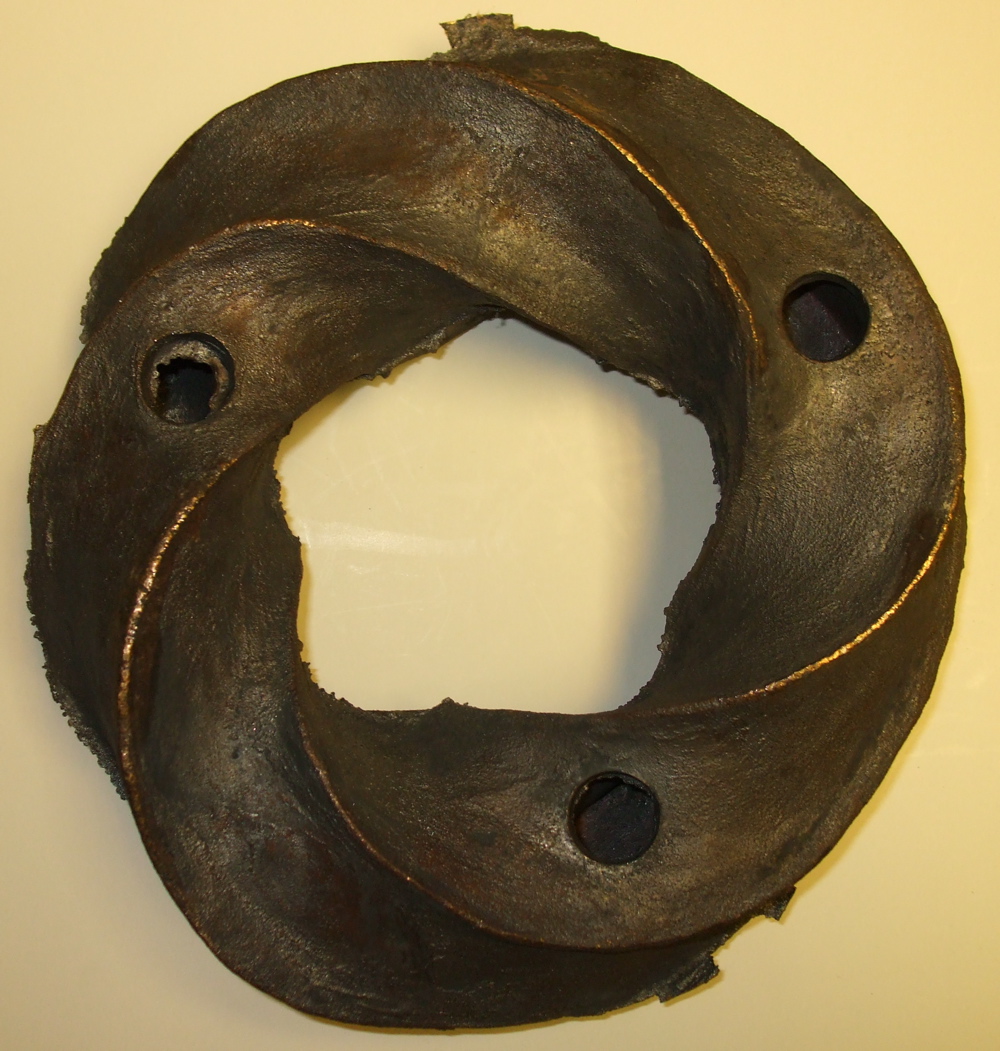
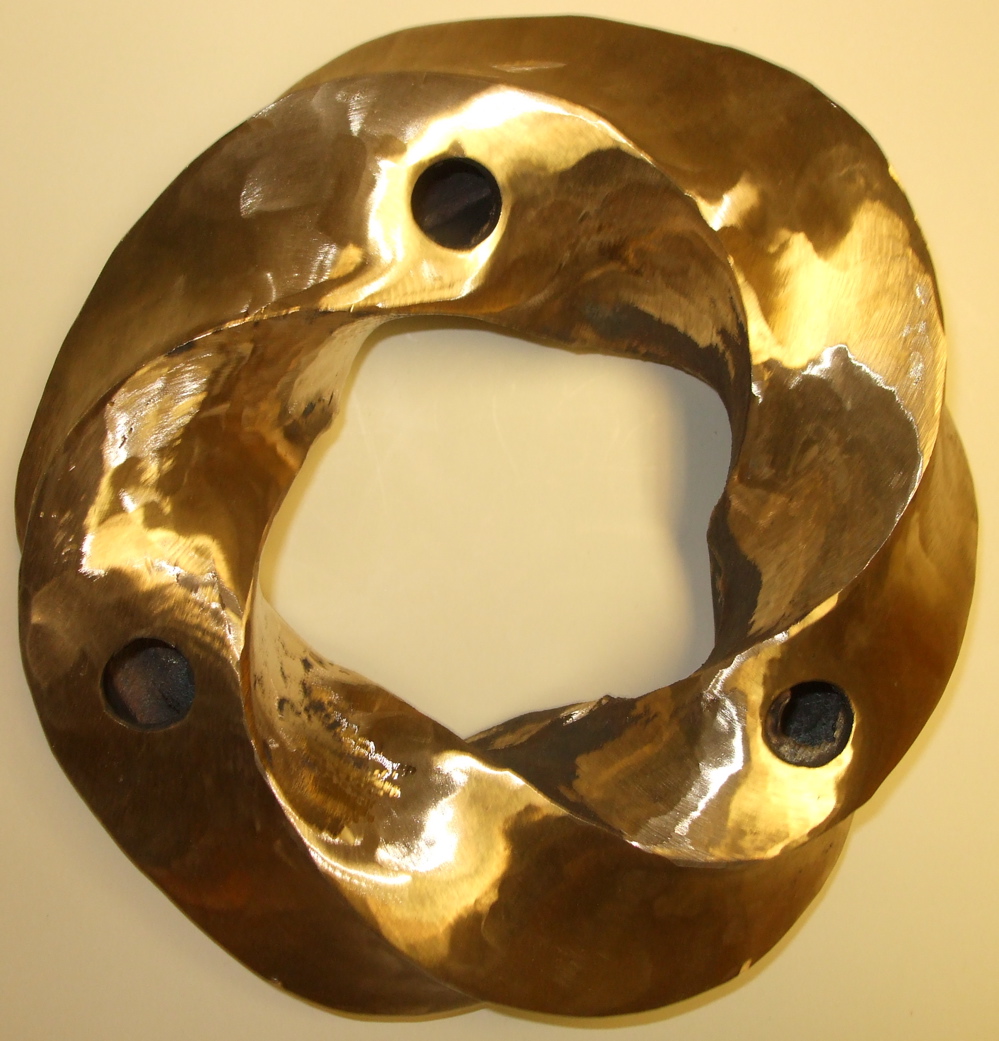
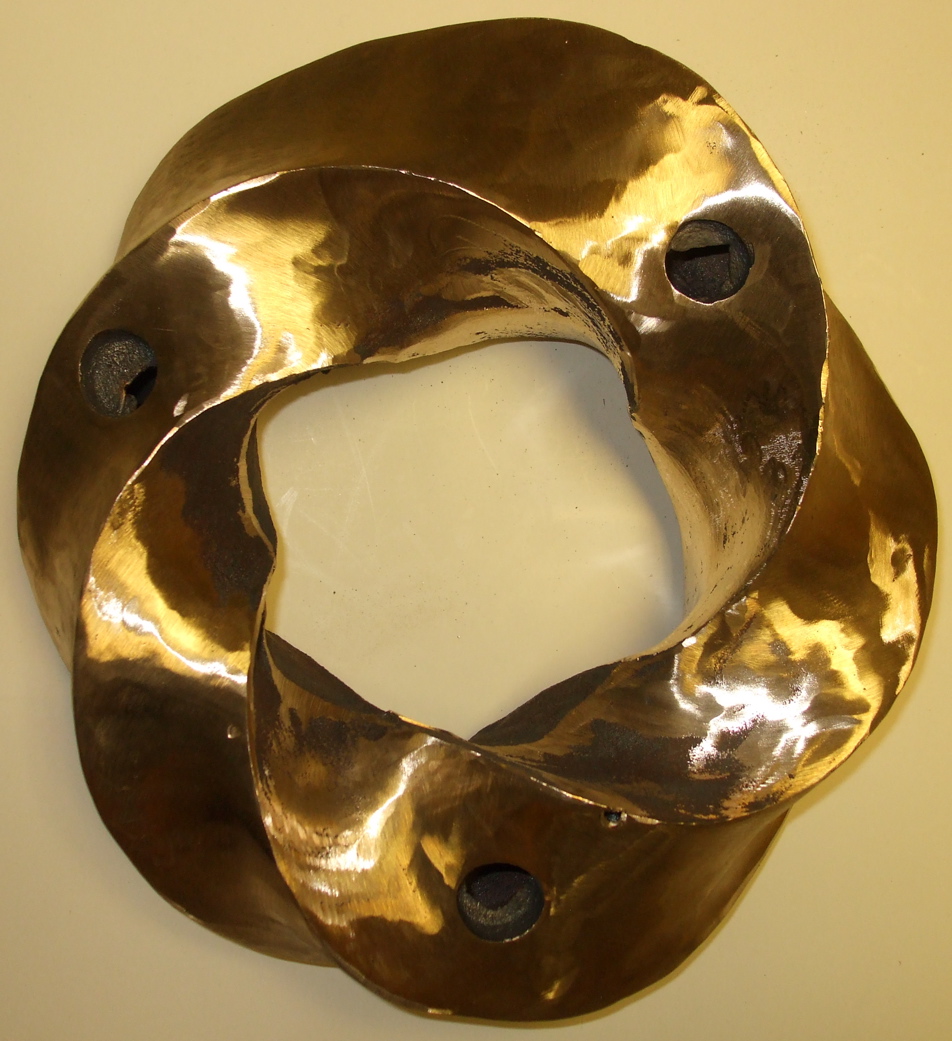
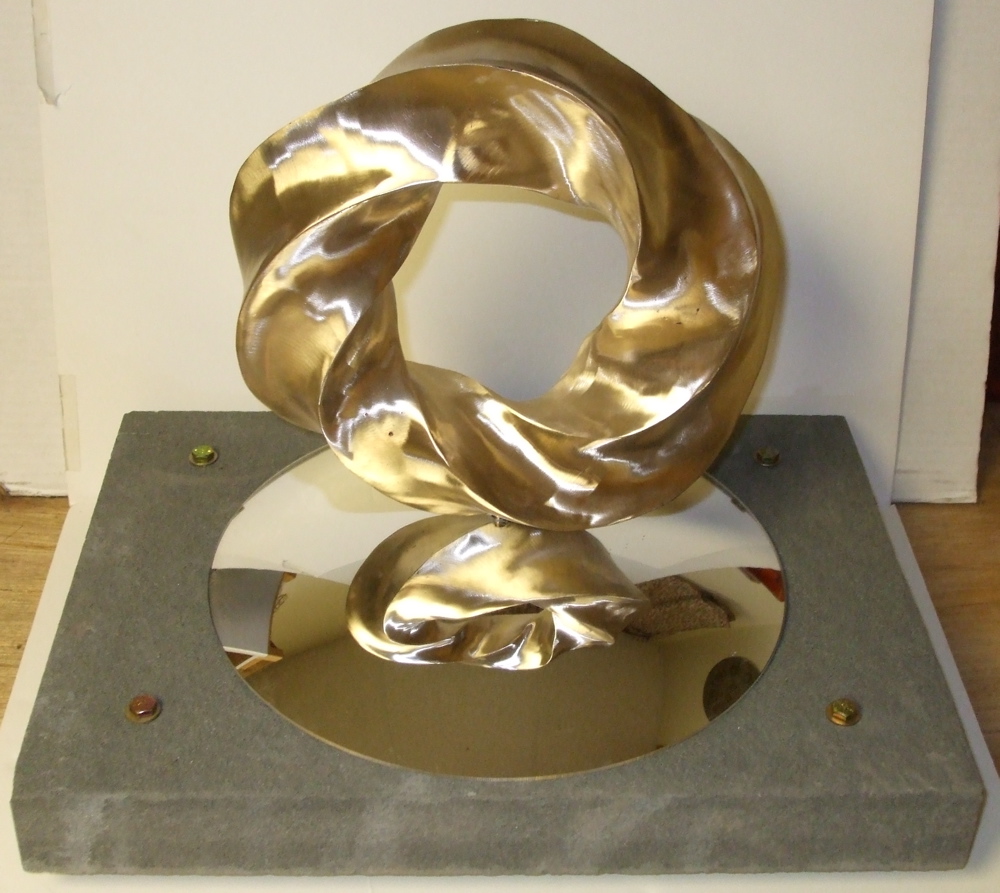
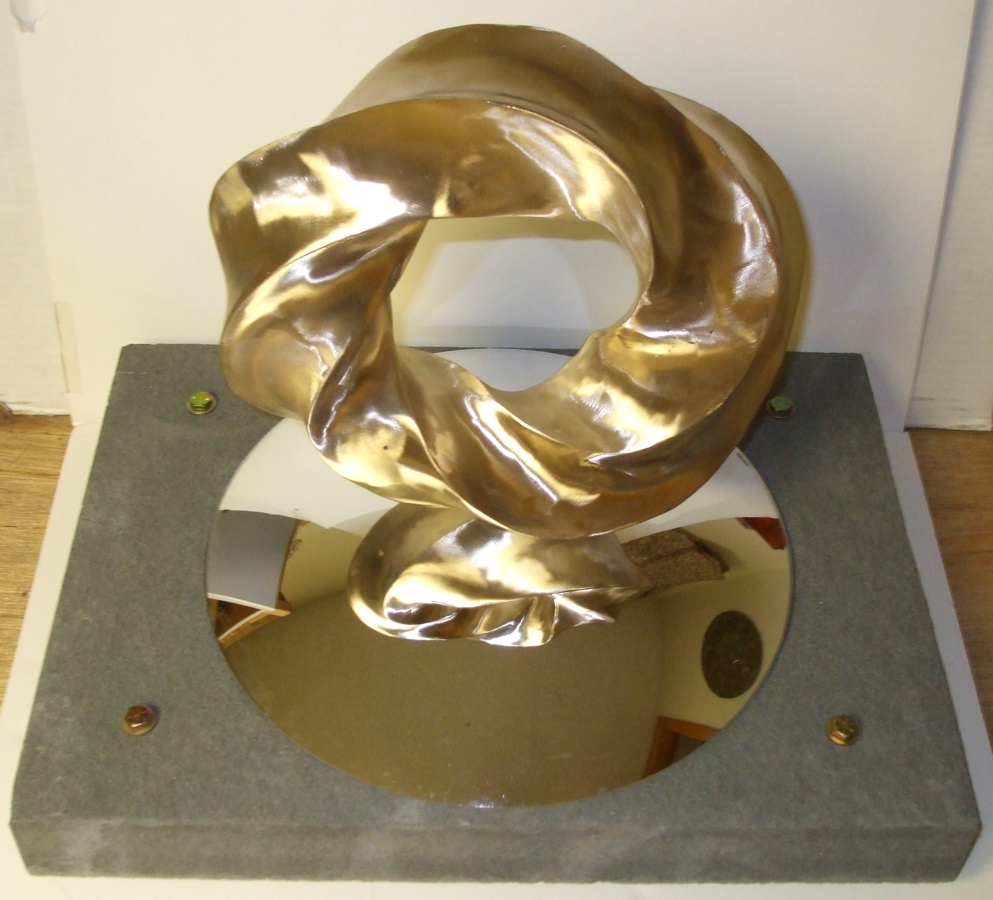
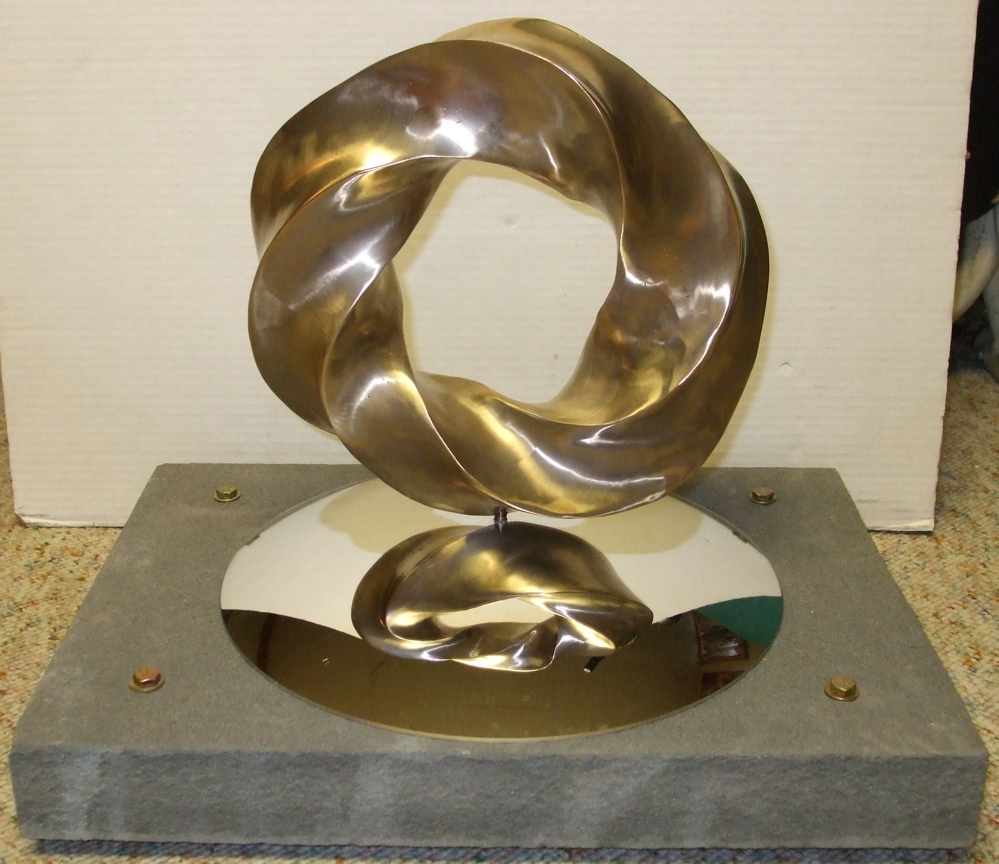
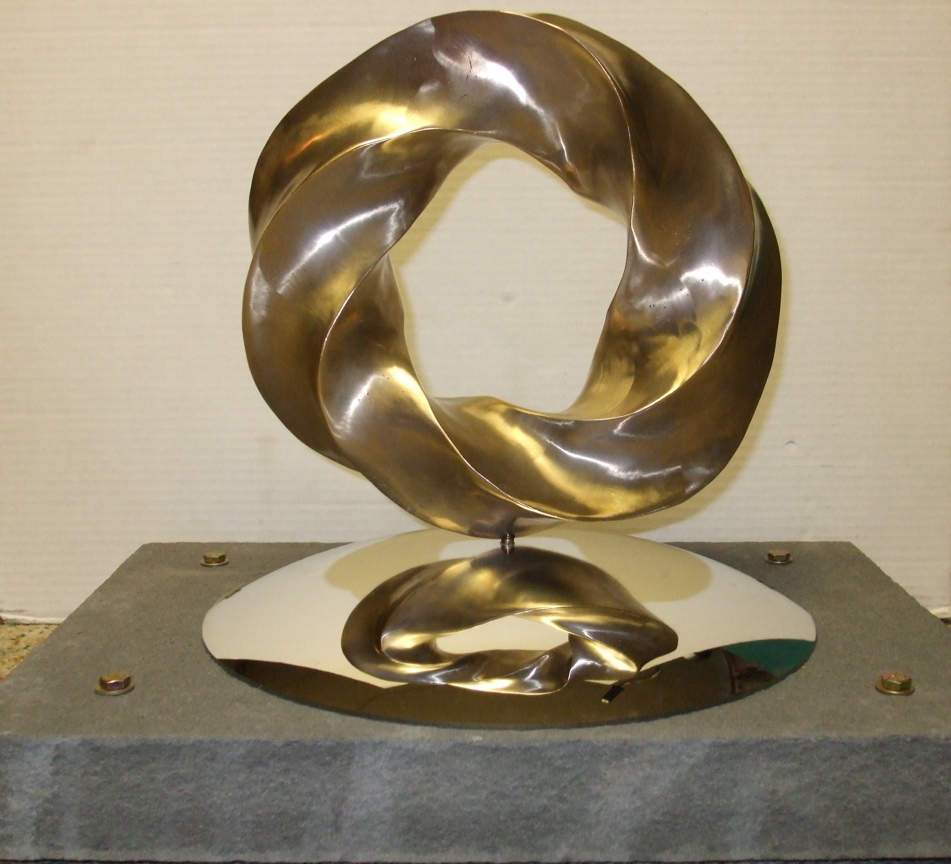
The next picture shows the large bronze Mobius Trefoil knot (25 pounds) which was cast in three separate pieces, finally welded together, and mounted over a bluestone base.
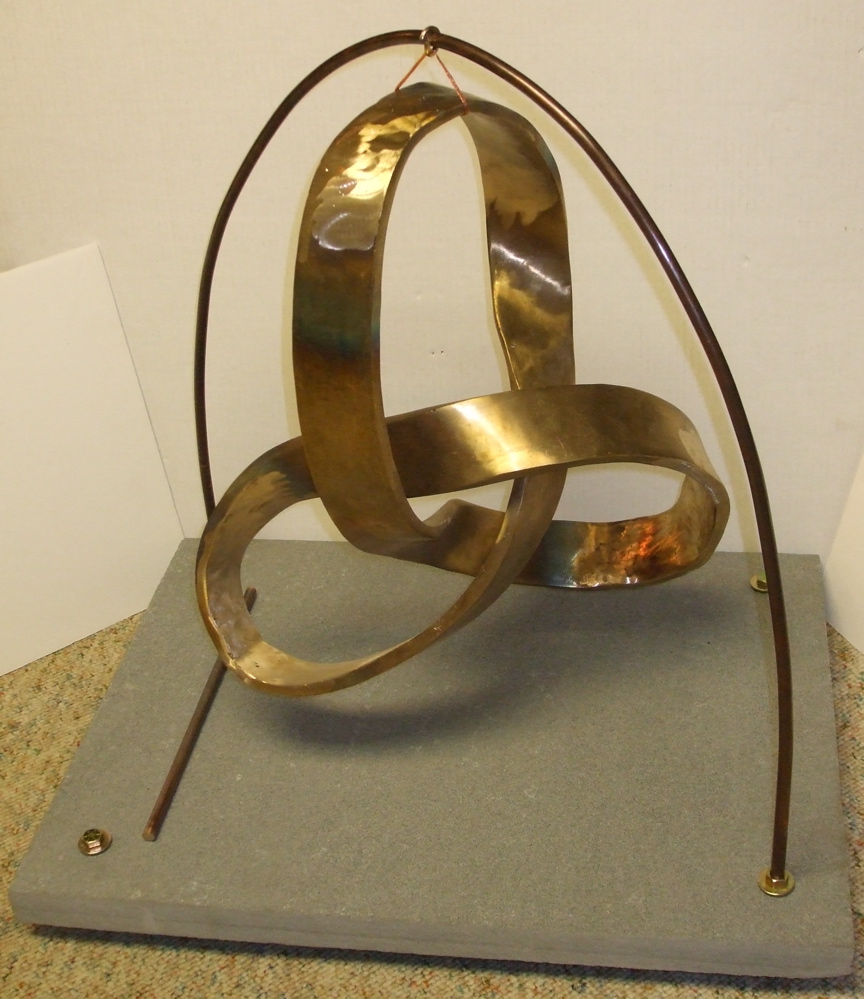
The next pictures show some small wooden carvings made from the center holes of wooden torus knot sculptures which I will finish soon. These two are made from Claro Walnut and Zebrawood. The Zebrawood twist is approximately 3" tall and 1.5" in diameter. The Claro Walnut twist is 1.5" tall and 3" in diameter.
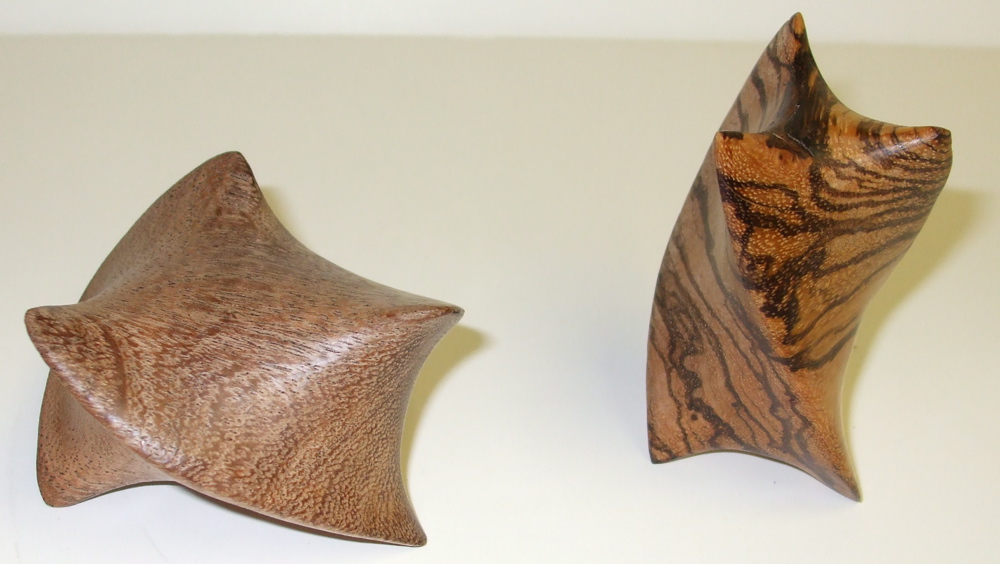
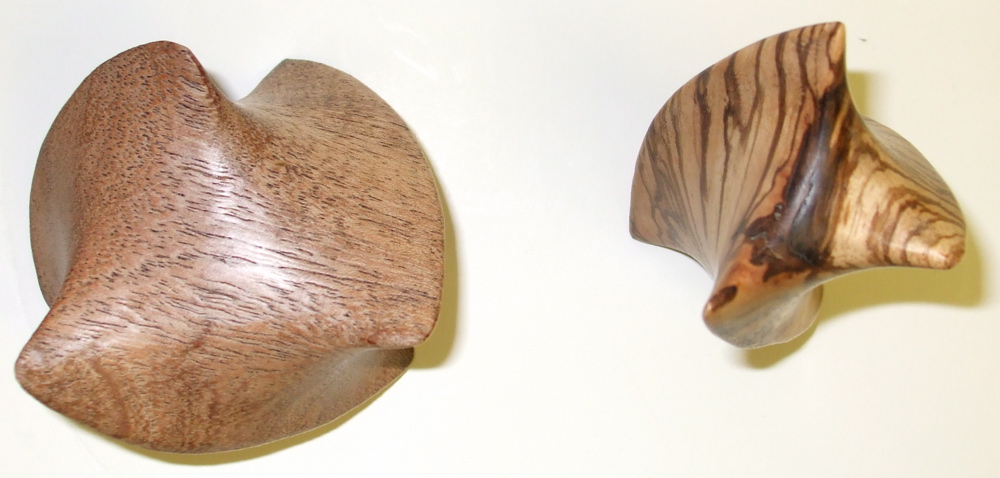
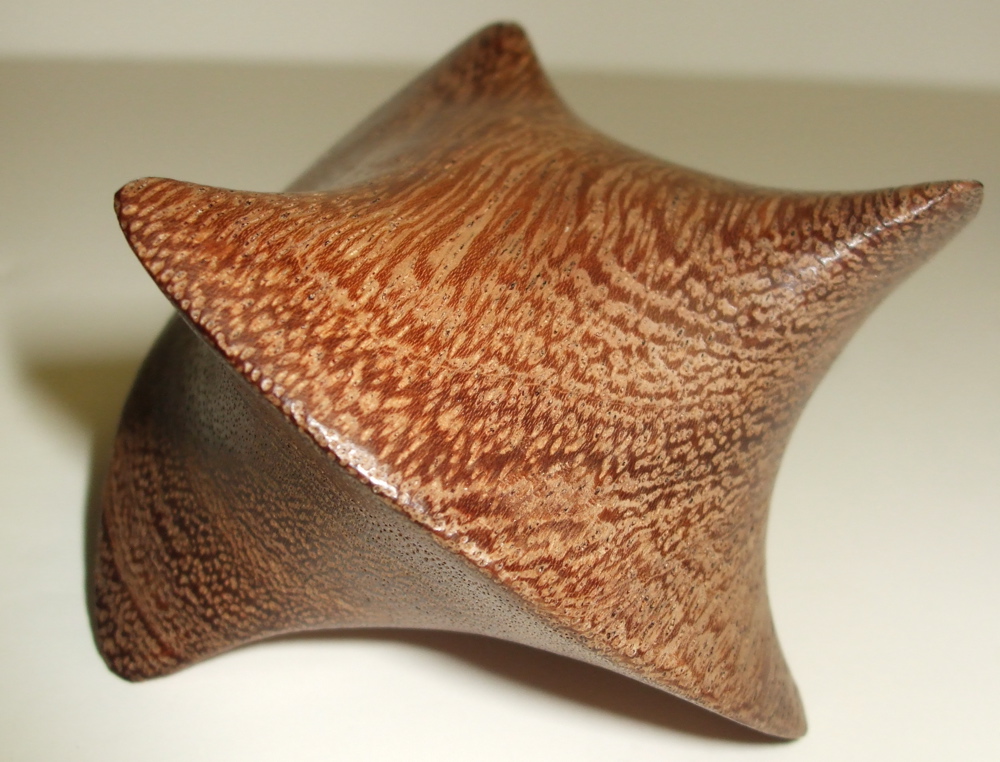
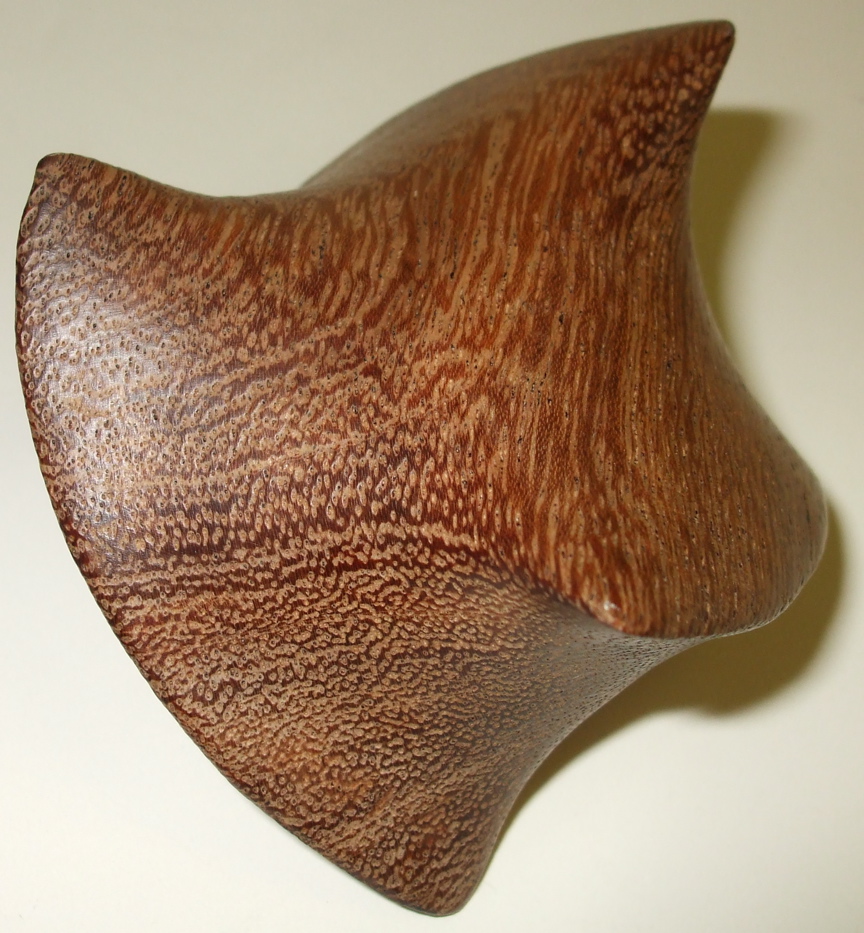
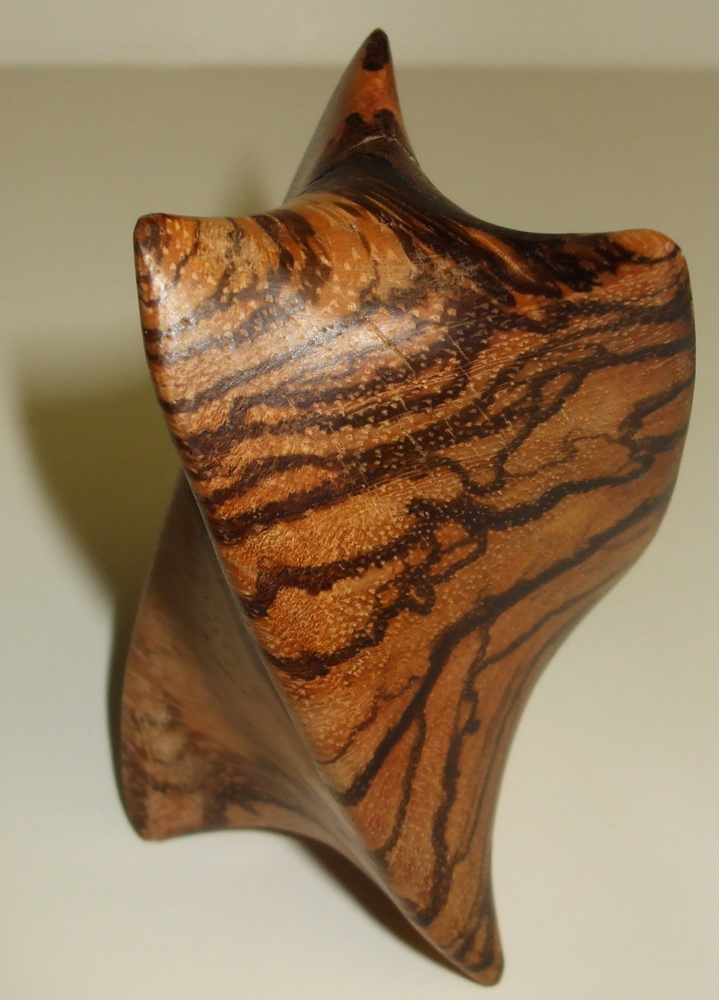
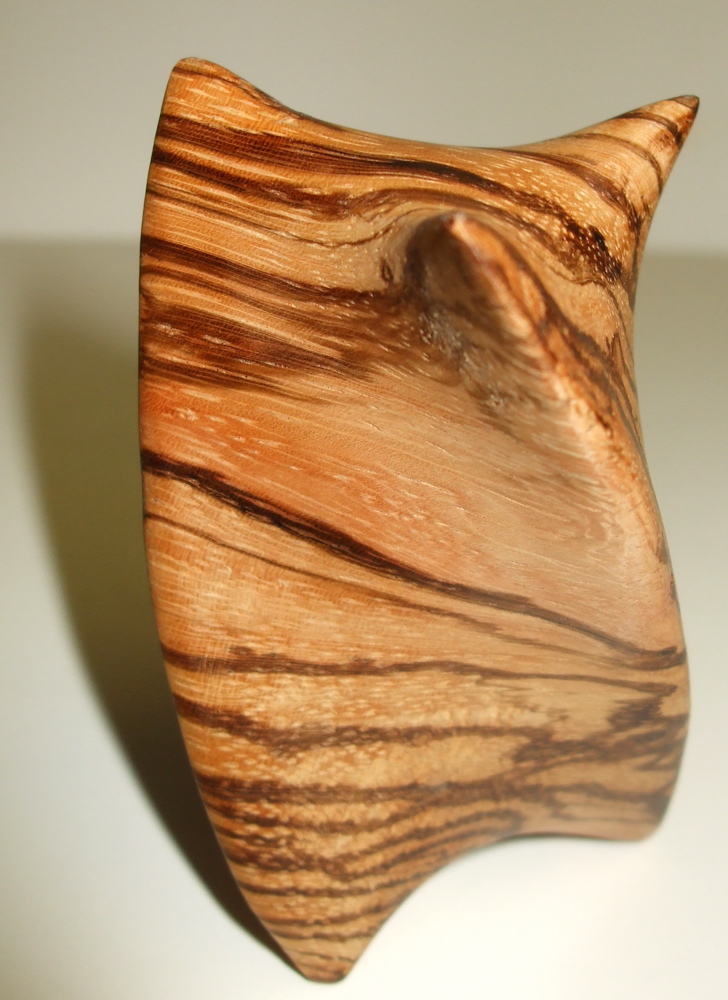
The following four pictures show a torus knot carved from Black Mesquite, completed on July 31, 2012. This is actually a torus link, made from three simple (1,1) torus knots which divide the surface of the torus into three separate sections. The three knots never cross on the surface. The third and fourth pictures were taken in the sun, which produced the shadows at the top. This sculpture is approximately 7.5" in diameter, and 2" thick.
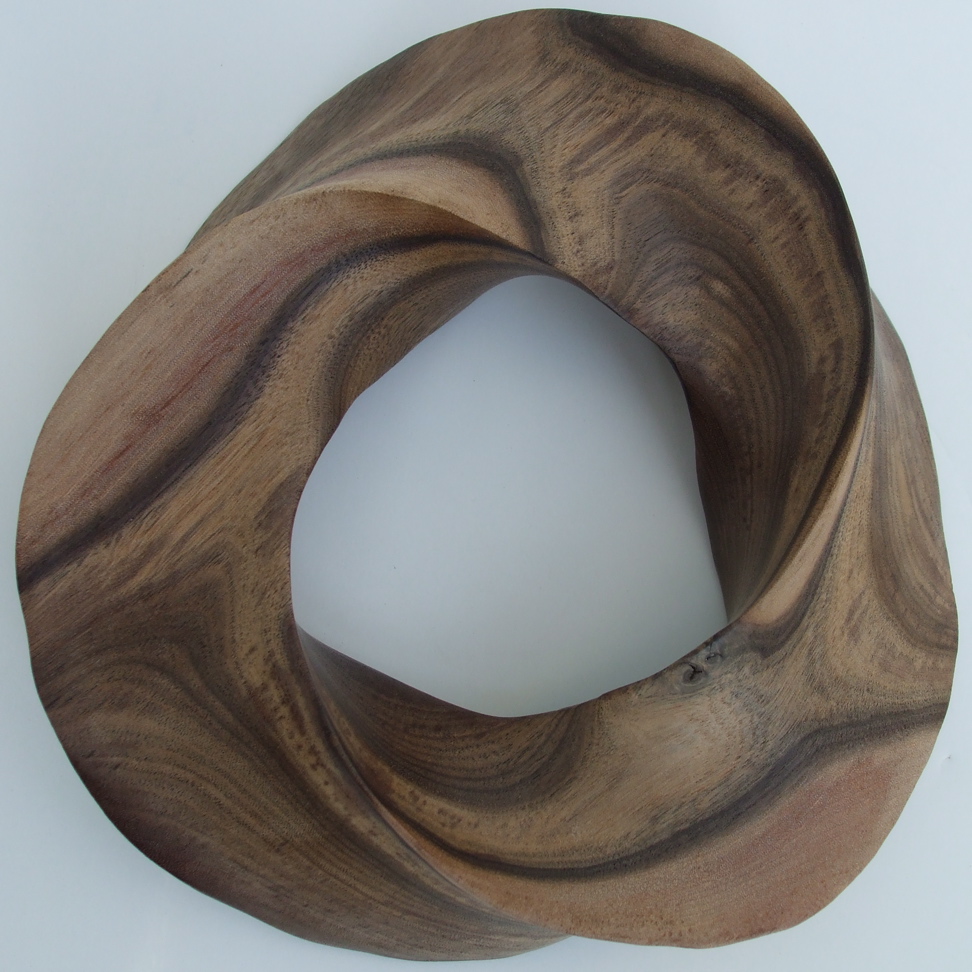
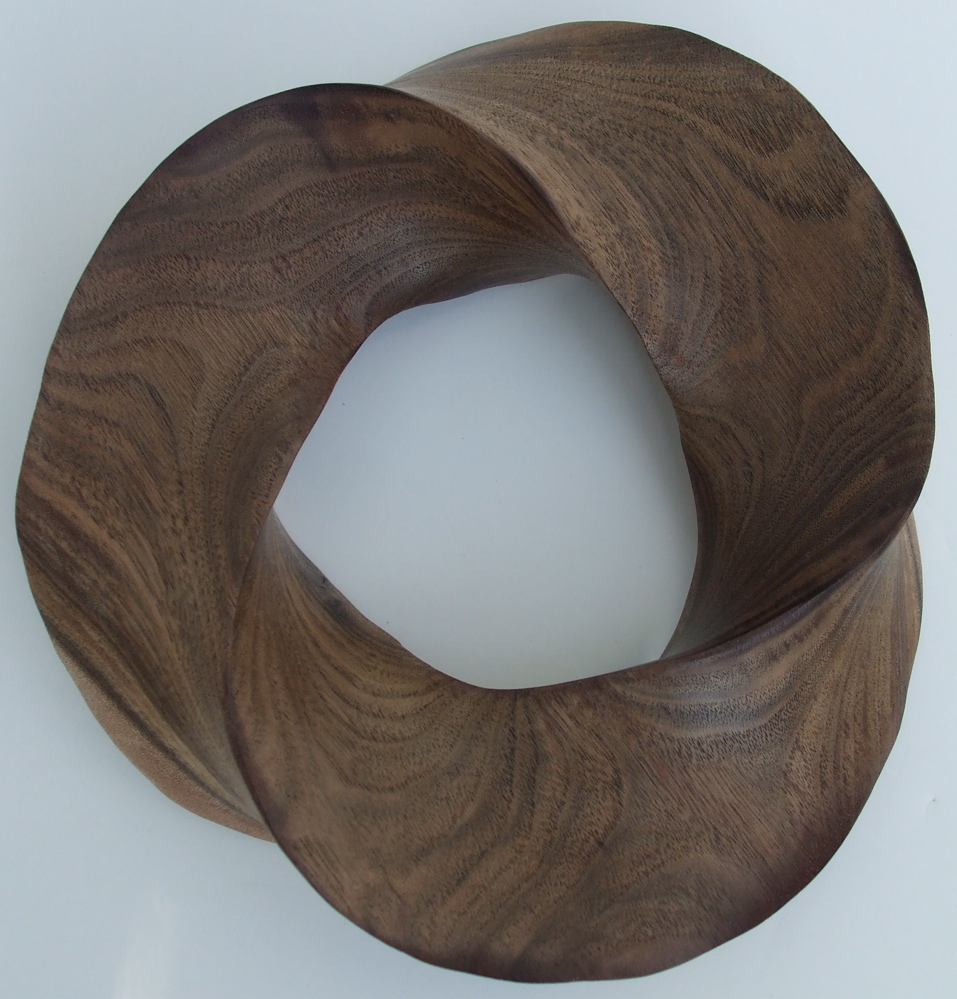
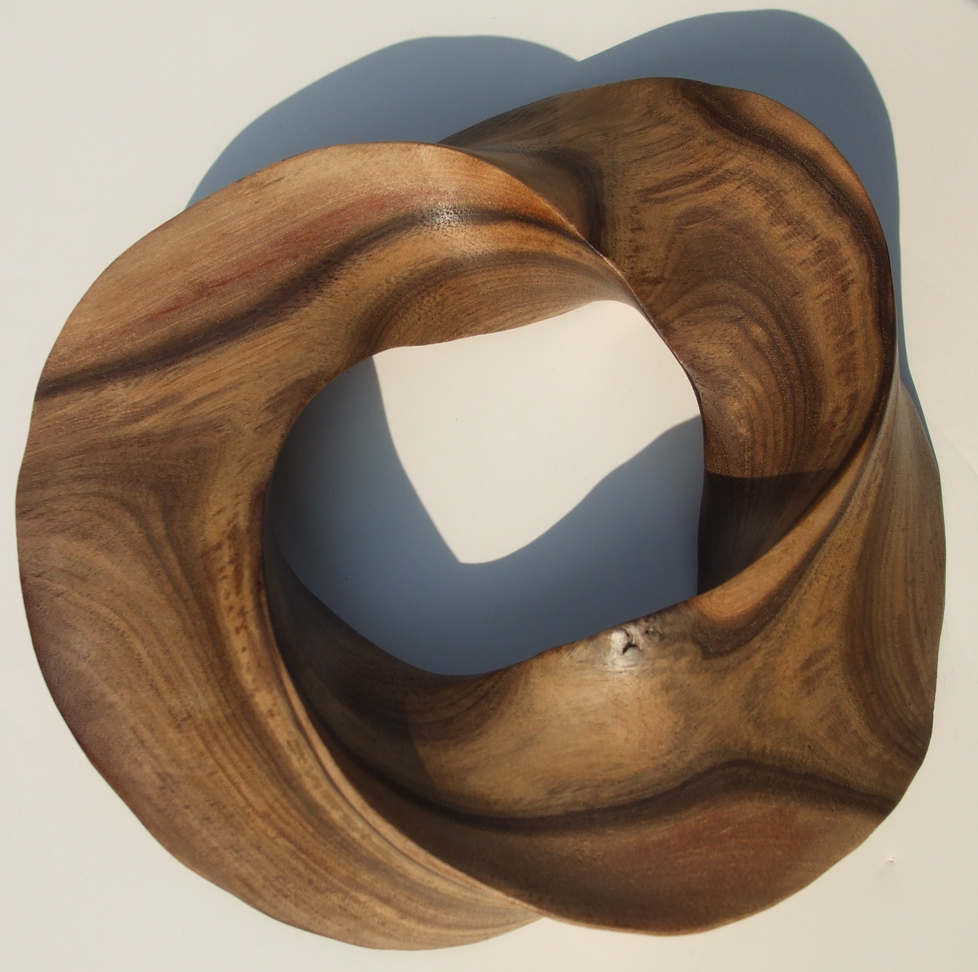
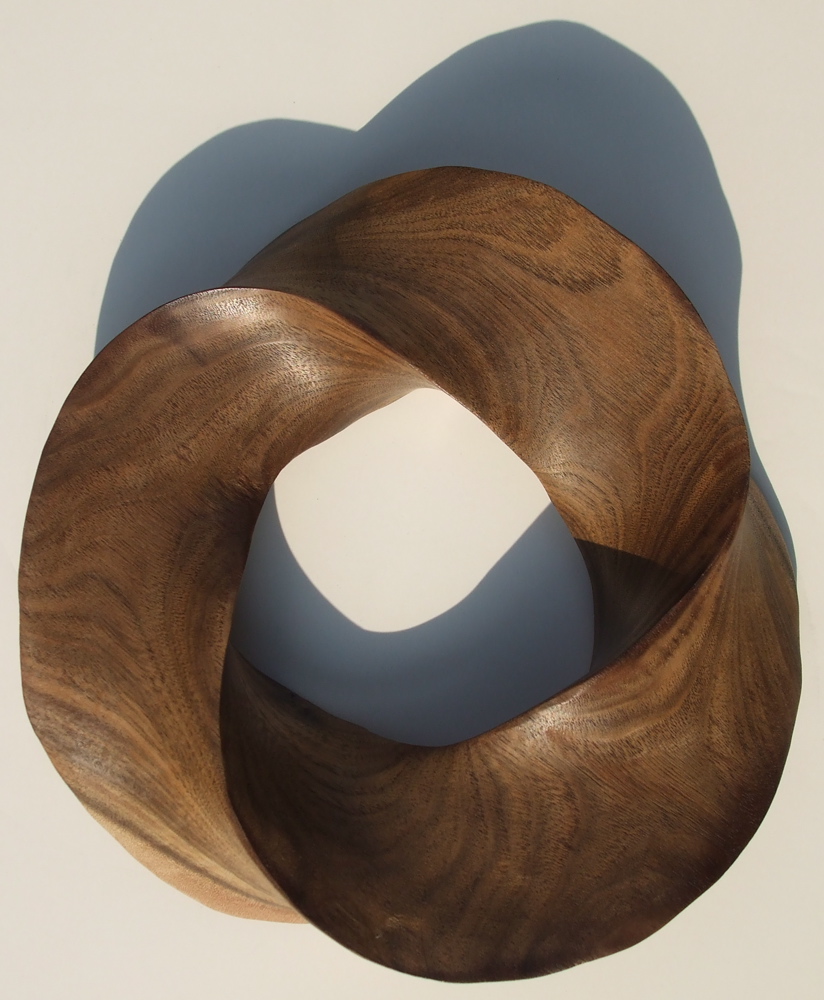
The following two pictures show the same kind of torus link, three (1,1) torus knots, made from wax, which will be used to make a bronze cast version of this sculpture. It is 6" in diameter and 1.5" thick.
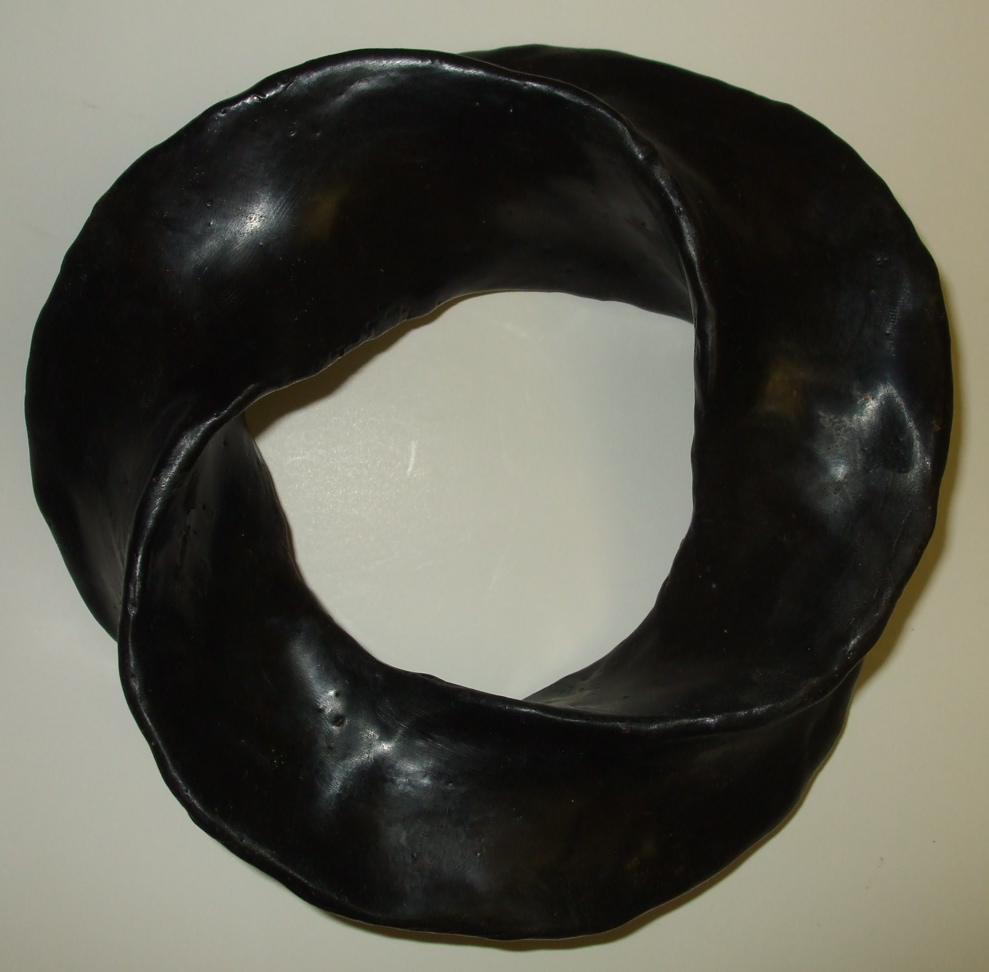
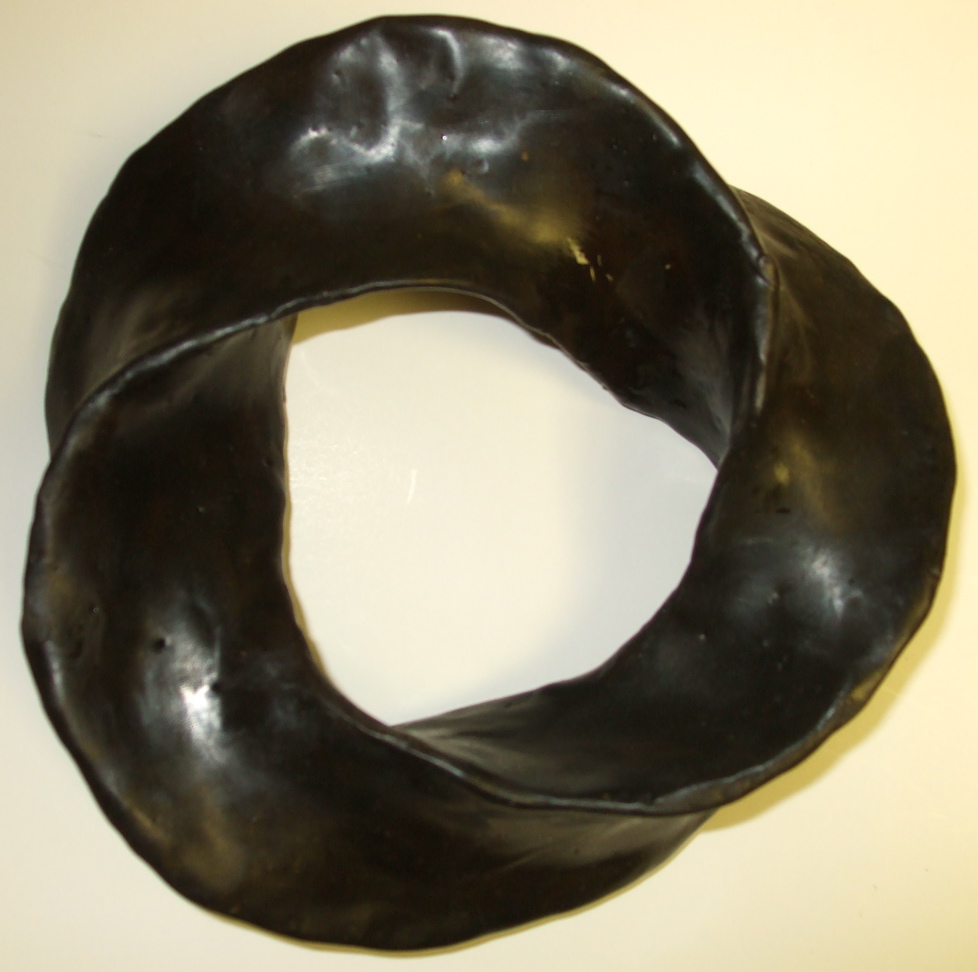
The next pictures show some small wooden carvings made from the center holes of wooden torus knot sculptures. These three are made from Black Mesquite, 1.5" tall and 3" in diameter, Bubinga and Jobilla, each 2" tall and 1.5" in diameter. These were completed on Aug. 6, 2012.
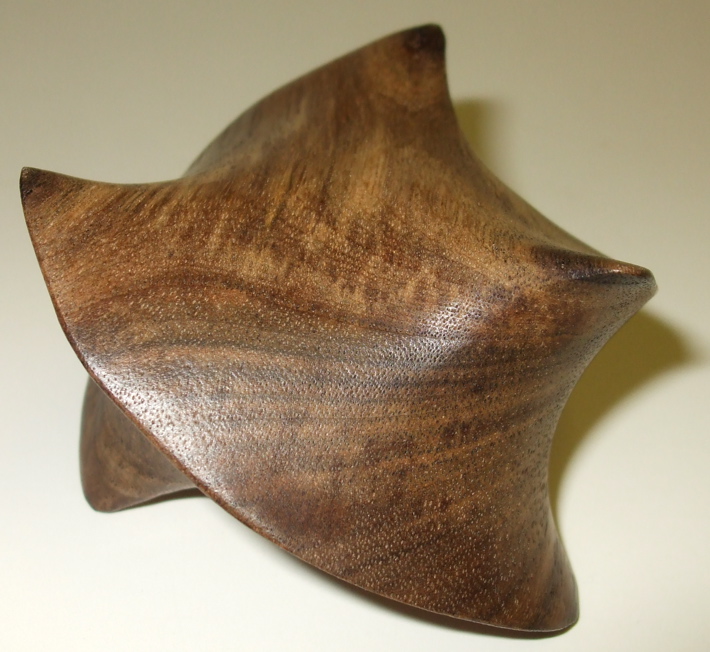
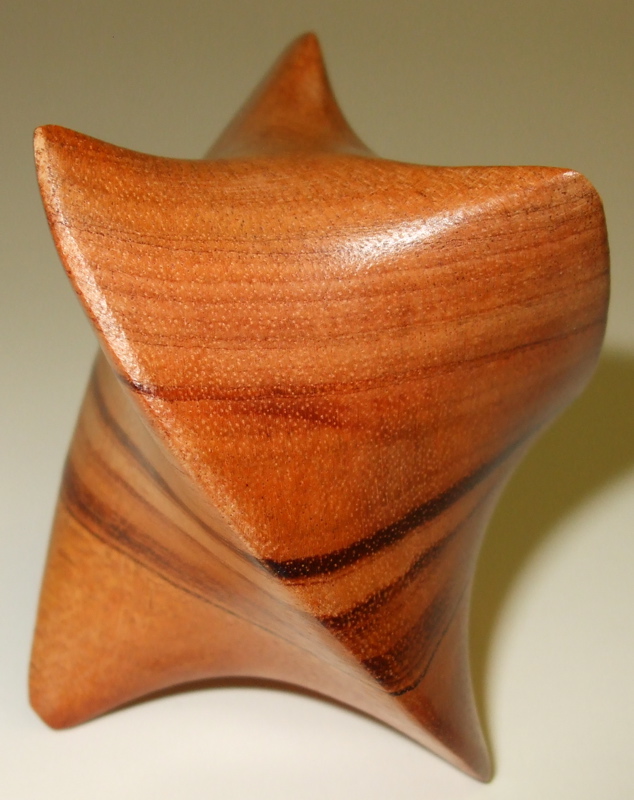
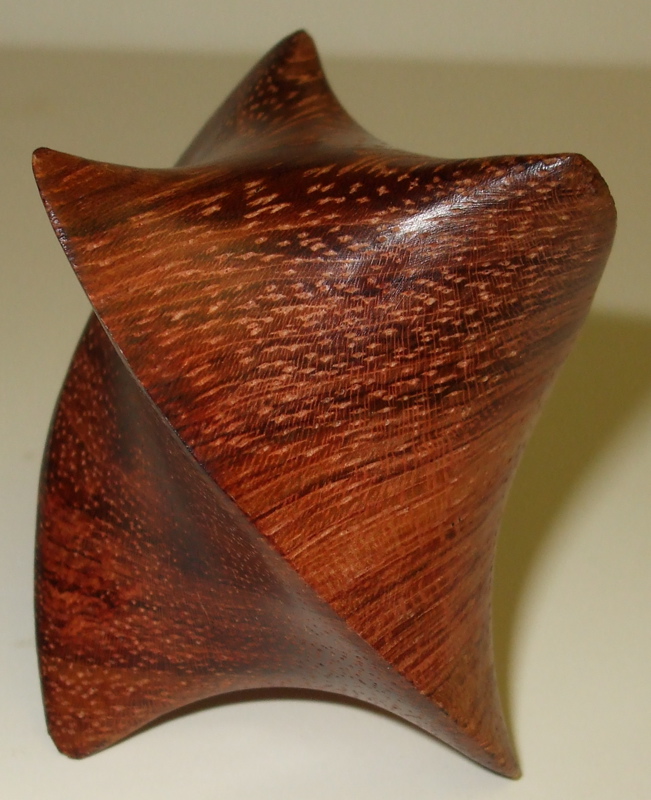
The next pictures show the two sides of a (3,5) torus knot, approximately 6" in diameter and 2" thick, carved from Jobillo wood, completed on August 27, 2012, the 27th birthday of my older daughter, Emily. I believe that the slope of the curve for this knot, when plotted on a rectangular grid with opposite sides identified so as to form a torus, is positive, so this pair of integers should be the same sign. It felt to me as I carved it, that it would have been more naturally carved by a left handed person. All the others I have carved were curved so that a right handed person would be more comfortable. Perhaps that is because those knots actually had negative slope, (3,-5) or (4,-5), for example. Some knot theory expert who sees these pictures should send me an email explaining the correct order pairs for these torus knots. The wood has a beautiful light red grain
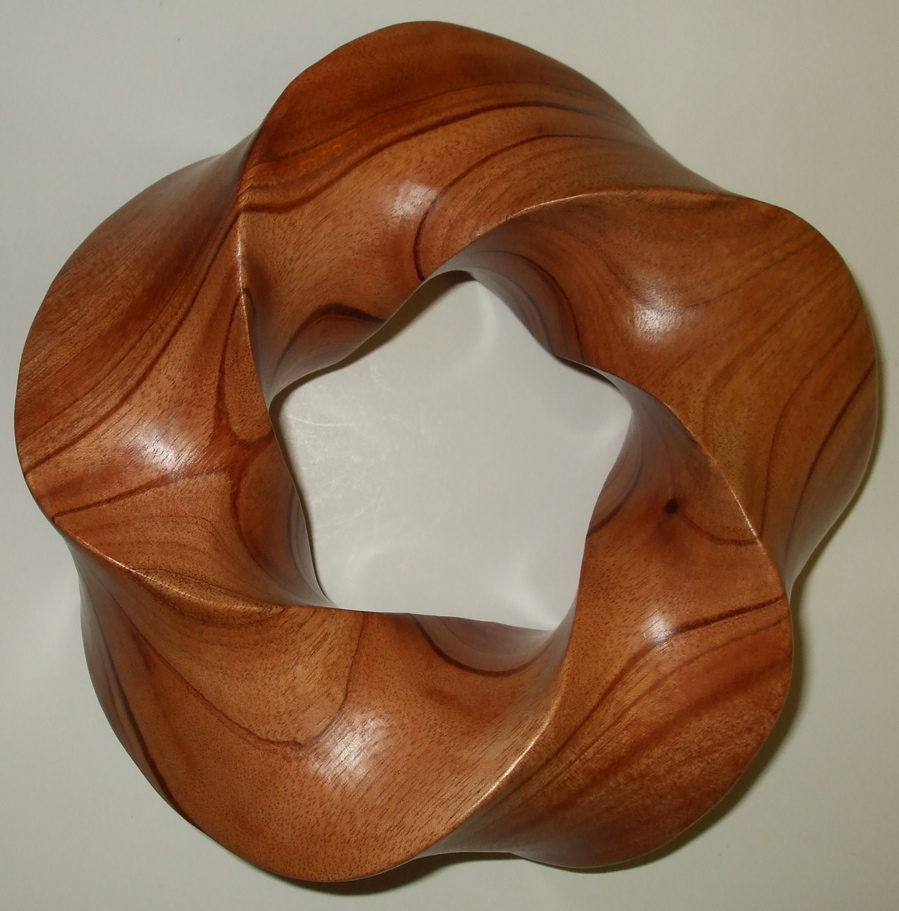
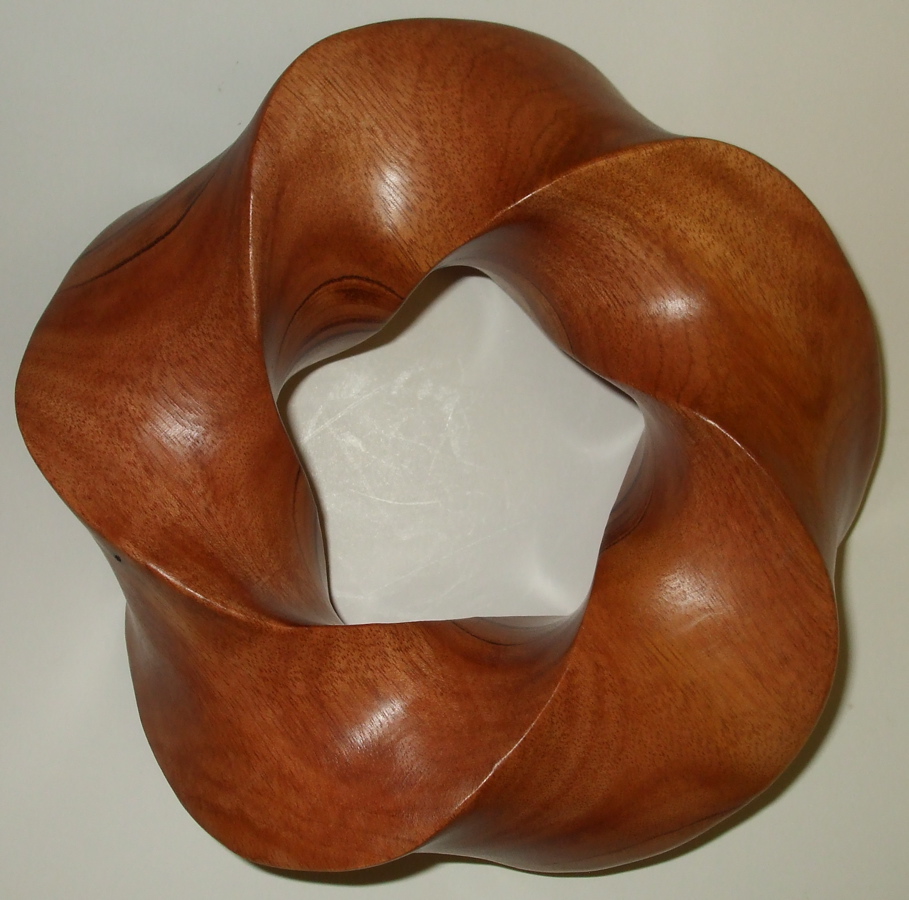
To see more types of sculpture I have tried, follow the following links:
Links back to:
Webpage of Alex Feingold,
Department of Mathematical Sciences,
Binghamton University.